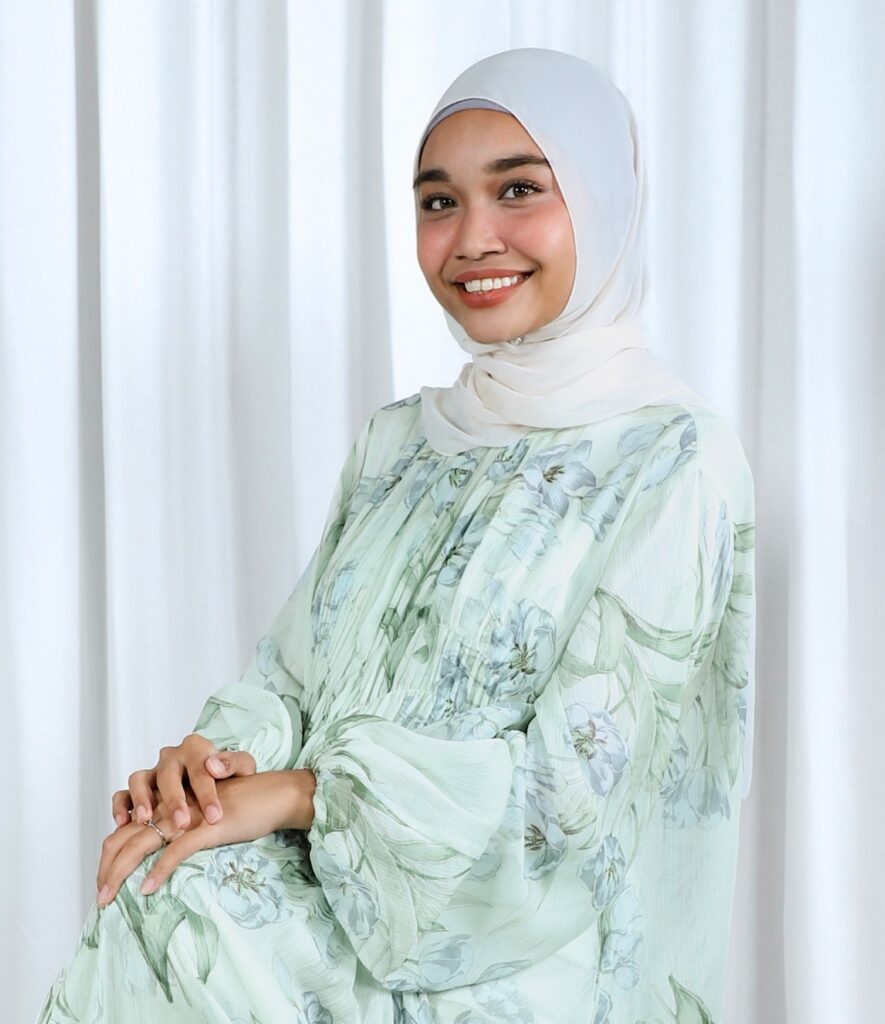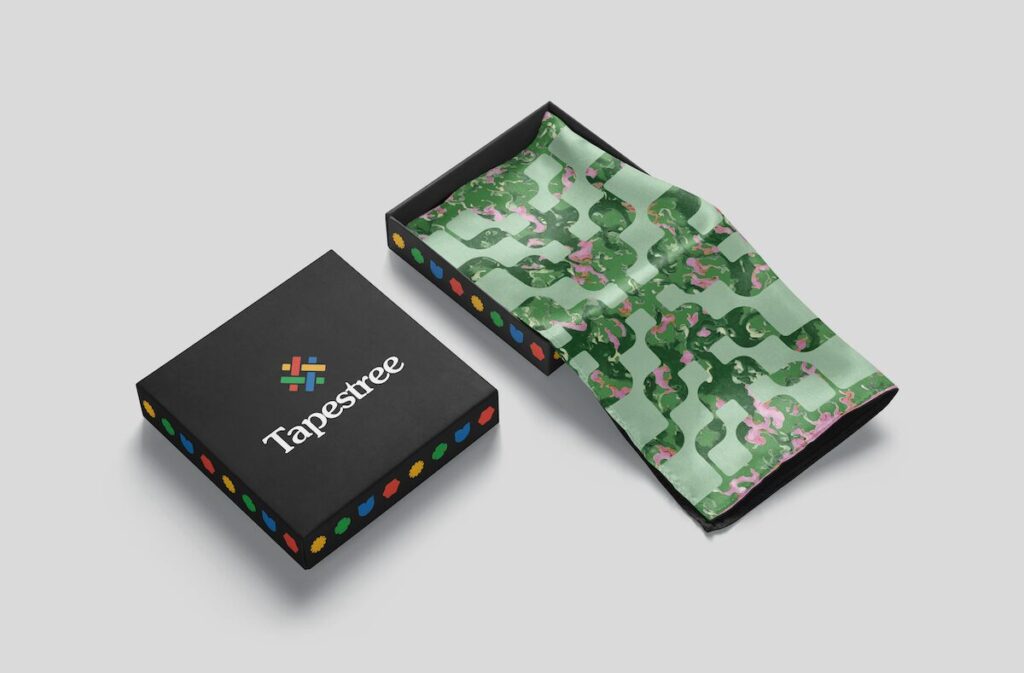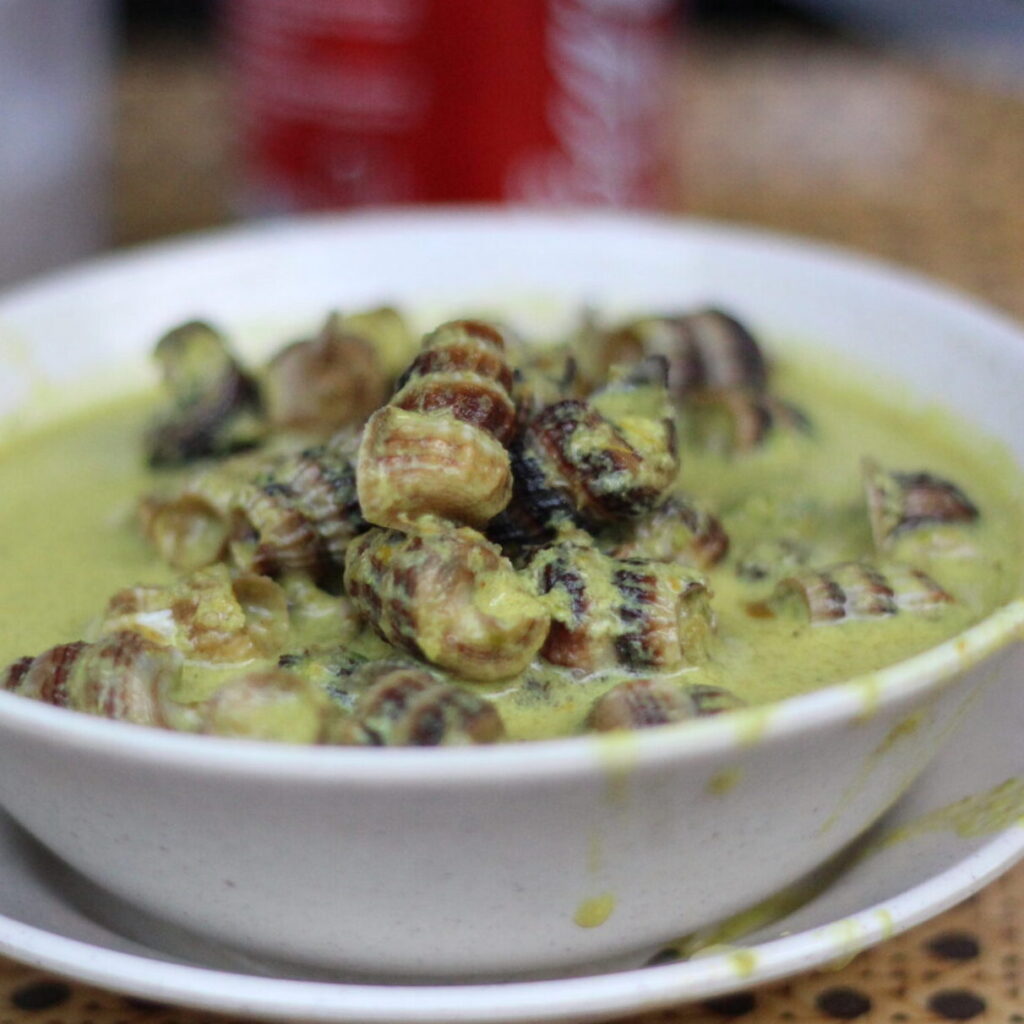Nazurah Rohayat – Hari Raya reflections
Designer and founder of Tapestree enjoys the coming together of food, community and meditative thoughts on this special Muslim holiday



Nazurah uses AI to create motifs that bridge cultural tradition and modernity

"The food is incredibly important to our celebrations. What I love most is how all these different dishes come together on one table. The siput sedut tastes better when you're sharing stories while trying to extract every bit from those shells."
- You have shown through Tapestree that technology and AI can actually harmonise with the creative elements of traditional design such as batik motifs. What is the process of getting AI to work for you as a designer?
You know, people always ask me if I’m afraid AI will replace traditional craft, but honestly? I see it as the most powerful cultural innovation tool we’ve ever had. When I work with AI, I’m not just feeding it pretty patterns – I’m teaching it to understand roh (soul).
Take the pucuk rebung motif, for example. I don’t just show the AI bamboo shoots, I explain that in Malay philosophy, this represents pertumbuhan yang tidak putus-putus – endless growth, resilience through adversity. The AI needs to understand that when a Malay artisan stitches this pattern, she’s literally weaving prayers for her children’s future into the fabric.
My breakthrough came when I was working with old kain songkets. I spent hours studying not just the visual pattern but the breathing rhythm of the weave – how the gold threads catch light, how the balance flows through each section like a meditation. I realised I wasn’t just digitizing design, I was translating cultural DNA. Now when my AI generates contemporary interpretations, it respects these ancient rhythms. It’s like having a conversation between centuries – my ancestors speaking through algorithms to create something that’s both timeless and totally now.
- What does Hari Raya Haji mean to you and what traditional Malay food do you enjoy?
Hari Raya Haji represents sacrifice and community to me – it’s about reflecting on what truly matters and coming together with family. Growing up, I watched my father prepare for qurban, and there was this quiet dignity in how he approached it that taught me about meaningful giving.
The food is incredibly important to our celebrations. What I love most is how all these different dishes come together on one table – siput sedut lemak with that rich coconut gravy, sambal sotong with its perfect balance of sweet and spicy, slow-cooked rendang that’s been simmering for hours until it’s completely tender, and asam pedas with that tangy, fiery broth that’s both comforting and exciting.
But honestly, it’s not just about the individual dishes. It’s about how they all work together when the whole family gathers around that big table. The siput sedut tastes better when you’re sharing stories while trying to extract every bit from those shells. The sambal sotong has more meaning when my nenek is explaining how she learned the recipe from her mother-in-law. Each dish carries its own tradition, but when they’re all there together – with cousins talking, elders sharing memories, children running around – the flavours become part of something bigger. That communal experience, that sense of belonging and continuity, that’s what makes Hari Raya truly special for me.
- What traditional Malay craft, art or design do you have a soft spot for?
Tarian Melayu – Malay dance – is where I first learned that culture lives in the body. I was obsessed with it during secondary school, and spent every evening after classes practicing until my baju kurung was soaked with sweat. I won gold at Singapore Youth Festival but the real victory was understanding what I was actually doing up there.
My cikgu taught me Tari Inang. But more importantly, she taught me to dance with jiwa (soul). She’d say, “Nazurah, your langkah is great, but where is your story?” That’s when I learned that the gentle sway in Tari Inang isn’t just movement, it’s the embodiment of lemah lembut, the graceful strength that Malay women have carried through centuries of change. Every gesture carries meaning: the way we turn our wrists speaks of modesty, the way we move our eyes tells stories of love and longing.
That’s probably why I’m so passionate about cultural innovation through technology now. Dance taught me that heritage isn’t static – it’s alive, breathing, evolving. It lives through us, moves through us, and we have the responsibility to keep it dancing into the future.
- How do you relax after a hard day at work?
I hop on Discord with my crew! We’ve got this tight-knit community where we just… exist together, you know? Sometimes we’re gaming, sometimes we’re sharing random internet finds, sometimes we’re deep in conversation about everything from K-pop to new cafes to questions about life. It’s our digital lepak space.
There’s something beautiful about having friends who’ve never met in person but know your soul. We’ve created this space where cultural backgrounds blend seamlessly – my friends hear me switch between English, Malay, and Singlish mid-sentence, and they just roll with it. It’s like the most natural form of multiculturalism, where identity isn’t something you explain; it just is.
- If a young design student wants to stand out in Singapore’s tough creative world, and wants to preserve Malay heritage, what advice would you give?
First, be humble enough to learn from the older generation. Don’t just study aesthetics understand the philosophy behind it all. Learn about concepts like budi (reciprocal gratitude), gotong-royong (community spirit), and keseimbangan (balance). These aren’t just cultural concepts, they are design principles that can revolutionise how you approach creativity.
Don’t be afraid to challenge tradition respectfully. I get pushback sometimes: people asking if I’m “diluting” culture by using AI. But I believe our ancestors were innovators too. They adapted, evolved, incorporated new influences while keeping their core intact. When I create contemporary interpretations of traditional motifs, I’m not betraying heritage, I’m continuing the conversation our nenek moyang (ancestors) started centuries ago.
Find mentors in both worlds –the traditional craftspeople who carry cultural knowledge, and the contemporary creators who are pushing boundaries. The magic happens in that intersection. Your generation has this incredible opportunity to be cultural bridges – honoring the past while designing the future. Don’t waste it by choosing sides. Embrace the beautiful complexity of being both rooted and revolutionary.
Hidup ini adalah tentang keseimbangan – life is about balance. Master this, and you’ll create work that doesn’t just stand out, it stands for something.
Story by Carol Kraal. Photographs courtesy of Nazurah Rohayat and Tapestree.
